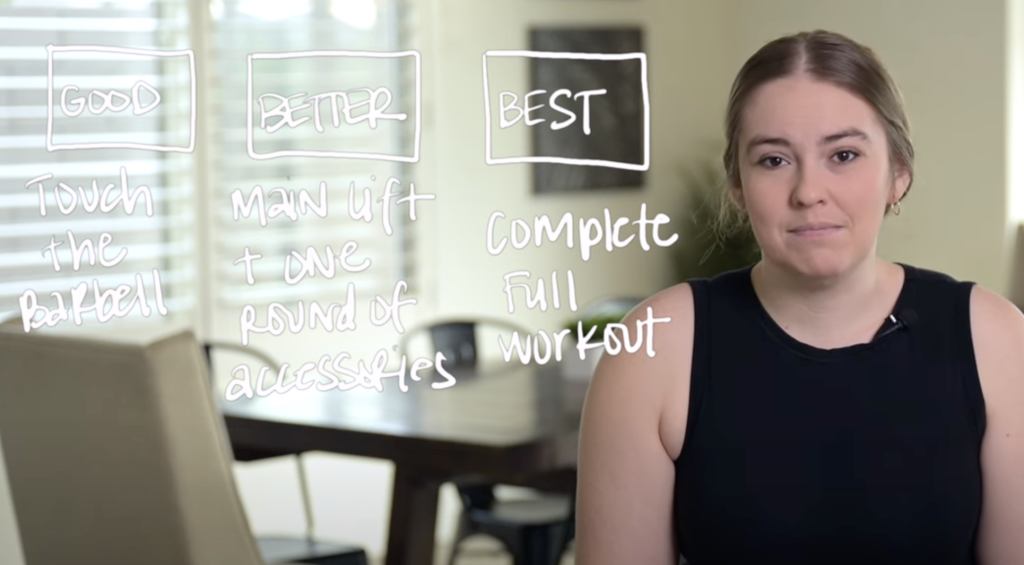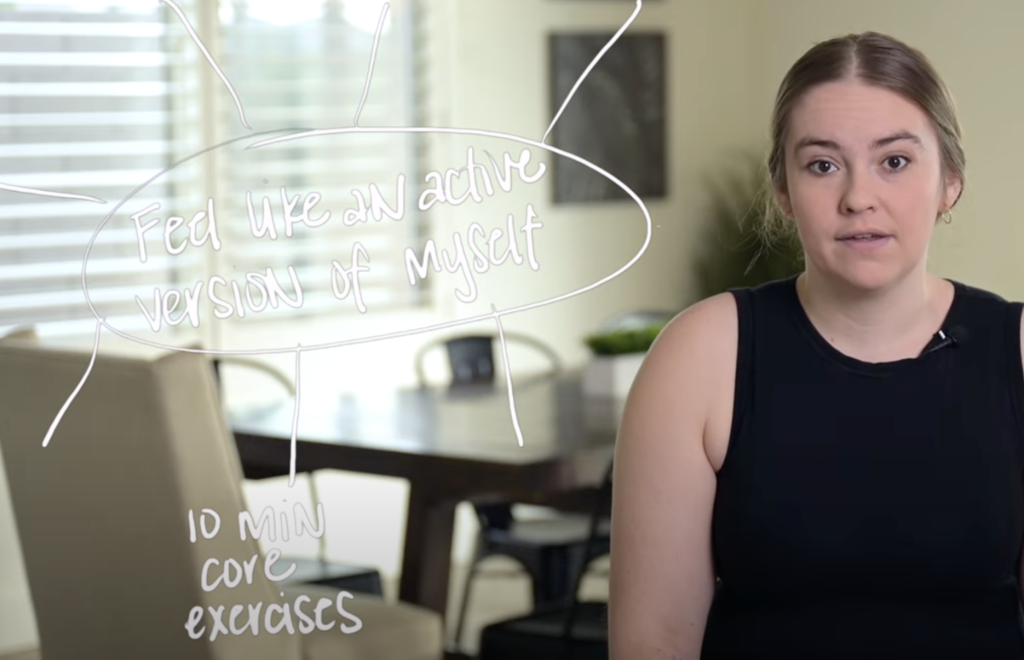If you struggle with an on the wagon, off the wagon mentality, the chances are you are dealing with all or nothing thinking, and in this blog I’m going to teach you two science-backed ways for how to get past it.
Make sure you stick around for that second one because it’s probably going to revolutionize the way you think about habits entirely.
Prefer to learn on video? Watch here:
Hi, my name is Dr. Karin Nordin and I’m your friendly neighborhood behavior change expert here to bring you the real science behind self-help.
And as my boyfriend likes to randomly remind me in the middle of dinnertime, I too sometimes struggle with all or nothing thinking (black and white thinking).
Let’s start by getting a clear definition of all or nothing thinking and then we’ll dive into how we’ll actually solve it.
All or nothing thinking is basically a shortcut our brain takes when thinking about our options.
If you want to get super sciency, all or nothing thinking is a type of cognitive distortion, which are basically like a series of errors our brains commonly make.
Here’s how that looks in real life:
It’s Friday night and you’ve only gotten in two workouts for the week. You really need to get that third one in, but you’re super tired from a long week at work.
This is when all or nothing thinking rears its head.
Your brain starts to tell you that if you can’t do the full workout to the best of your ability, you should do none of it. You should skip it entirely.
Hence the name, all or nothing…
But most of us, especially if you’re struggling with consistency, actually need to learn to bust through that all or nothing thinking and live more in that gray zone.
So let’s explore two techniques you can use to help you find and jump into that middle ground.
Technique #1: Good, Better, Best Chart
Here’s exactly how that looks…
Think of a behavior you tend to be all or nothing about.
Then you’re going to draw three boxes on a sheet of paper just like this:

In the box all the way to the right, you’re going to identify the best possible option. Maybe that means you do complete the full workout at the gym or maybe the whole house gets vacuumed.
Go crazy, give into your perfectionistic fantasies and write down that best option.
Next, slide to the left, and in that middle box next door, you’re going to write your better option, which is to step down from the best one. You’re going to explicitly identify exactly what that is.
For example, maybe that means doing the main lift and one round of accessories last.
Finally, you’re going to slide to that box all the way to the right and write down your good option.
This is a step down from the better option. So for example, my personal good option for working out is to touch the barbell. That’s it.
I got to go to the gym and touch the barbell, which usually ends up making me do at least the main lift.
Having this activity done ahead of time helps give your brain actual options that live in that gray area. It helps you bust through all or nothing thinking and actually become more consistent.
But if that doesn’t work for you, we’re going to explore another technique.
Technique #2: Identifying Your North Star Value
This technique is awesome for holidays or tough times when maybe your normal habits don’t quite fit because of changing circumstances.
Here’s what you’re going to do…
Take a piece of paper and write down the behavior that you’re struggling to be flexible about. Let’s say that you’re trying to go for a morning walk every single day.
Actually, let’s do this together right now in the comments.
Go ahead and put one behavior you’d like to make more adaptable to changing circumstances.
Then you’re going to ask yourself…
-
- What value am I embodying when I do this behavior?
-
- What is the actual reason behind this action being a priority for me?
For example, it could be that the value behind that morning walk is that you want to feel like an active version of yourself. It could be that you love that morning exercise because it makes you feel intentional or peaceful to start your day.
Once you’ve got a value chosen, you’re going to draw a bunch of spider web lines coming out of that value just like this.

At the end of each spider web line, you’re going to identify a different action that still helps you uphold that same value.
For example, if you can’t go for a morning walk because the weather is bad, you could still do 10 minutes of core exercises to still embody that value of being active.
Share In The Comments Below:
I want to hear what value your behavior represents and one alternative way you’d be able to still embody that value with your behaviors.
By the way, if you’re loving the super tangible techniques in this blog, I send out an evidence-based change psychology tool to my email list every single Tuesday.
It’s completely free, so make sure you get signed up HERE.
Let me know if you implement either of these two tips, I hope they work for you!
Thank you for reading, see you in the next one!





